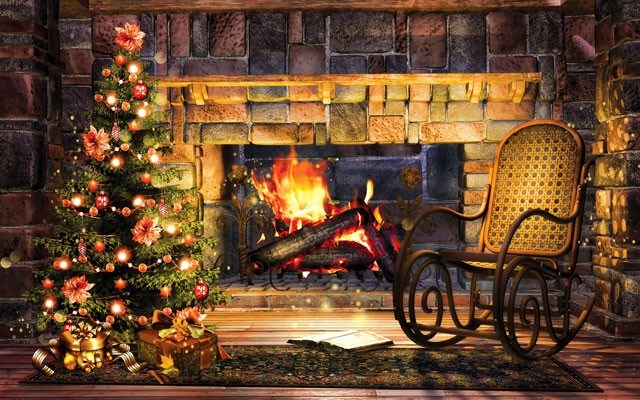When you're wearing your dry old, logical Spock hat, winter solstice is the moment when the sun reaches its most southerly point, directly over the Tropic of Capricorn. For those of us in the northern hemisphere, it marks the longest night and shortest day of the year along with those b-r-r-r-r low temperatures that are the welcome mat of winter. In the meantime, our southern hemisphere neighbours are celebrating just the opposite.
With variations as pedestrian as Leap Year in our calendar and as astronomical as the tilt of the Earth on its axis and various other gyrations our home planet dances through, winter solstice can happen anywhere between Dec. 20 and 23, although it usually occurs Dec. 21 or 22. (This year's winter solstice was 8:48 p.m. Pacific time on Monday, the 21st.)
But when you're wearing your sparkly, magical, sensory hat, winter solstice is something else entirely.
Midvinterblot, the Longest Night, Yule, Jól, Julofferfest, the Extreme of Winter. Our ancient ancestors far and wide had many names for festivals that variously urged the return of the warmth of the sun-and life itself. They chased away the darkness and cold with dancing, singing, giving and sharing with loved ones and strangers, and downing immeasurable quantities of feast foods and fermented substances in the process — fermented no doubt to preserve the drink as much as to urge the merriment and good cheer along.
I like to picture those ancient peoples — who, in one way or another, begat all of us marching toward Christmas and various other midwinter celebrations around the world this time of year — trying to pinpoint the time of their activities, then more or less settling on something round about now.
The druids at Stonehenge come to mind, waiting for the sun to rise just so between the great monolithic rocks, now surrounded by safety fencing but still able to capture the human imagination. Witness the thousands who return each year, down jackets and sleeping bags in arms, to do the same today.
Bless Michael Enright's heart for resurrecting, in a recent edition of his CBC Radio afternoon show Rewind, the many interviews Margaret Visser did over the years on CBC enlightening us all on the many and deep roots of our Christmas traditions. Visser, one of our finest cultural anthropologists ever, awakened us to the richness of our culture long before Google and Wikipedia existed, and much more reliably and wittily than both combined.
The connectivity and continuation symbolized by the Yule log. The role of the ancient Roman Vestal Virgins, priestesses of Vesta, the goddess of the hearth, who guarded the sacred fire of Rome and made sure it never went out. The hearth itself, crux symbolic and real of the family circle. (Why do you think we place our important "valuables"—heirloom candlesticks, family photos, valuable art pieces and, in our digital age, the monolithic flat screen TV — on or over the mantelpiece housing the fire real or faked with natural gas outlets and LEDs?)
The magic of evergreen mistletoe, which fruits in winter and so became a potent symbol of fertility. Likewise Santa with his big red belly. "There is no question that he is a fertility figure — abundance, fatness, generosity, babies," Visser writes in her 1994 best seller, The Way We Are, before going on to point out all the phallic components of dear Santa, which, if I summarized them here, would forever alter the way you think of the old boy. So I shall leave it at that, allowing you to keep your innocent childhood memories intact.
One of the points in the CBC interviews that struck me most was her remark that Christianity was so far-ranging and inclusive in its reach that it was very good and, I would add, very smart in embracing customs and rituals already in place, spiritual and otherwise. Maybe it didn't so much like the paganish aspect of gift-giving, as the Three Kings embodied, but there it was: a story ancient and favoured already, one arguably embracing the idea of sharing and compassion key to Christianity and virtually every other faith on the planet.
And so it was that many of the preexisting ideas and customs around winter solstice were swept up into the magical box we in the Western World and more or less raised in the Christian tradition known as Christmas.
Christmas with its heavenly scents of sweet cinnamon and turkey stuffing and chestnuts roasting on an open fire in one of those greatly symbolic hearths, or at least in hot pans of the vendors' wagons along city streets. Christmas with its sting of cold on the cheeks and crunch of frost beneath your boots on a moonlit valley trail. Christmas with its carols and candles and piney boughs, waiting expectantly for the next miracle to come down winter's frozen pike.
And they do, so light a candle in the window.
Merry Christmas!
Glenda Bartosh is an award-winning journalist who reminds you to share the spirit of Christmas with a stranger.




